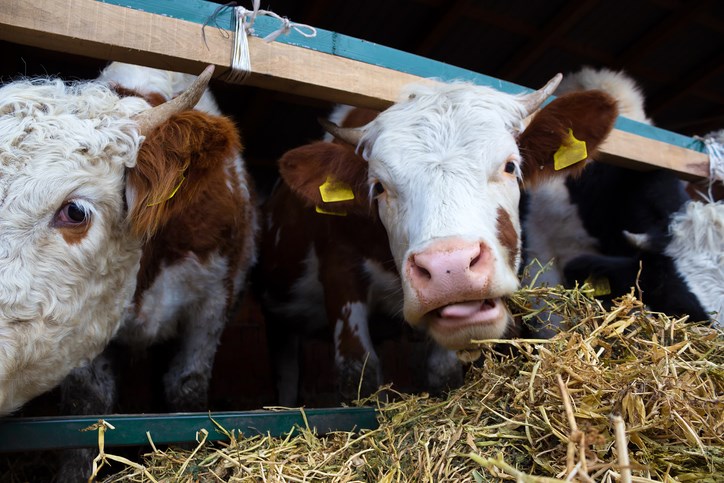The psychological boost from recent rainfall after the prairie drought could keep some cattle from going to market.
Canfax manager and senior market analyst Brian Perillat told the Canadian Beef Industry Conference last week that predicting what will happen based on weather is always tricky, but anecdotally it seems that cattle producers will hold on to their cows and market more calves as they look at their feed supply.
“The rain may not do a lot now, but it just gives confidence (for) next year,” he said in response to a question after his presentation.
The cow herd may not be impacted as much as first thought, he said, although it’s true that a significant number of heifers that would have gone into breeding herds have gone on feed.
“But the cow herd itself I’m thinking, and you’ve got to look regionally (because) there are guys who are devastated and liquidating, but the percentage change in my mind is not going to be that big, three to five percent of cows,” Perillat said. “We typically cull 10 to 13 percent of our cow herd so we may see 15 or 20 percent cull rates, but I don’t think it will be as extreme as the initial reaction.”
He said the largest cow herd reduction ever was eight to nine percent in the late 1970s. Even through the drought of the 1980s producers were able to find feed and limit a large cull and he said that resilience is still found in the industry.
The Canadian cow herd has been shrinking since the high of five million in 2005 yet production increases are meeting strong demand.
The United States continues to liquidate its breeding herd and changes in its dairy industry are picking up some of the slack.
Perillat said there are nine million U.S. dairy cows, and calf slaughter has dropped considerably as the veal industry shrinks.
“U.S. calf slaughter has shrunk dramatically from about a million head just 10 years ago down to under 400,000 head of calves going to veal,” he said.
Last year, U.S. cow slaughter was up four percent but calf slaughter was down nearly 60 percent, adding 800,000 to one million more feeders into the supply chain.
Dairy calves are moving into feeder or cross-breeding programs and funneling into the beef system.
Through to June, Canada was a net importer of 166,000 feeders to meet demand, he said. Many of those were dairy-cross calves, but also beef cattle, which filled an additional 15 percent in Canadian feedlot bunk space added since 2015.
Perillat said the U.S. is typically the largest importer of beef but also one of the top exporters. Through the last 10 years it has shifted back and forth between the two. This year, it is a net exporter and China has moved from being a very small importer to the largest beef importer in the world.
“Over this last year we’re seeing the United States as a net exporter of beef and considering the fact that we might see about half a million more pounds of beef being produced in the United States this year, 2021, this trade is over a billion-pound flip of going from a net importer last year of about 800 million lb. to a net exporter of that much,” he said.
Perillat said this highlights the impact of international demand.
Canadian slaughter numbers for August will likely be the biggest August in more than 10 years.
“We’ve killed over two million cattle so far this year, which would be the highest since 2010,” he said.
Feeding and processing animals in Canada, as well as larger carcass weights, support both slaughter and production.
Live cattle exports are down about 20 percent, moving from 600,000 head to under 200,000, although Perillat said that could change this fall because exports did pick up in August.
“Overall, the trend remains that we’re keeping more cattle in Canada, we’re finishing more, and we’re assuming processing or a larger proportion of our herd here in Canada,” he said.
Calf prices were pressured by some early sales and concerns about a marketing surge coming this fall. Perillat said even some of that has eased up with the rain.
Western Canada has enjoyed record strong basis levels the last several years and the strongest calf prices in North America. This spring’s “phenomenally strong” fed cattle prices and basis at a $20 premium to the Nebraska market, even with dollar exchange, have moderated to more historical levels but not enough to see fed cattle flow south, he added.
The Ontario market, based on rail price, is on par with Nebraska and at a slight premium to Alberta.





